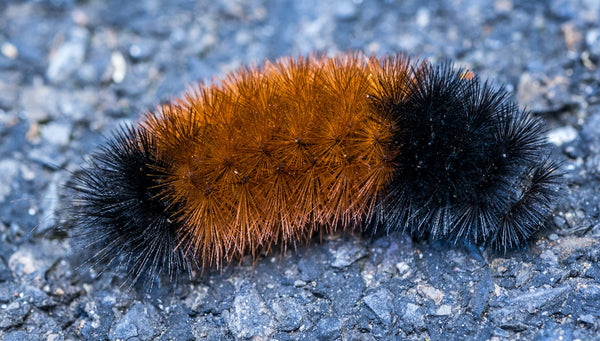
Clevelanders who were lucky enough to be around for Dick Goddard are likely well aware of what a woolly bear is. But let's take a look at the furry little creature that was beloved by the also-beloved Cleveland meteorologist.
What's a Woolly Bear - or Woolly Worm?
You've likely seen these fuzzy little black-and-brown caterpillars before. They are the larva of the Isabella tiger moth and can be found just about anywhere. Though the woolly bear is a pretty cute-looking insect, the most notable thing about this caterpillar is its supposed ability to predict winter weather.
Can the Woolly Bear Accurately Predict Winter?
The legend goes that the woolly bear can actually predict what kind of winter an area will have based on its stripes. If the rusty, reddish-brown-orange band of the woolly bear is wide, you are in for a milder winter. The more black a woolly bear is, the more severe the winter weather might be.
This infamous ability gained national notoriety dating back to 1948, when Dr. C. H. Curran, the curator of insects at the American Museum of Natural History in New York City, decided to collect as many of these caterpillars as he could, tracking their individual stripe patters and forecasting the upcoming winter.
Curran reported his findings to The New York Herald Tribune and continued the experiment for the next eight years to see if the old legend held some weight. For those eight years, Curran found that the brown band of the woolly bear took up more than a third of its body, and with those corresponding winters milder than usual, determined there was truth to the tale.
This mythical ability to predict the winter was a big reason why Goddard loved the furry little creature.
The Annual Woollybear Festival
In fact, Goddard loved the woolly bear so much he founded the Woollybear Festival in 1973 and was its longtime host. This one-day event - which originated in Birmingham as a school district fundraiser and eventually moved to Vermilion - is often touted as the largest one-day festival in Ohio, with more than 100,000 people typically in attendance and still going strong after 51 events. In true Northeast Ohio fashion, the festival is held on a Sunday in October in which the Cleveland Browns are either away or not playing.
The Woollybear Festival has just about everything you might expect from a festival: a costume contest, a parade, the crowning of a king and queen woolly bear (or "woollybear," as the event spells it), caterpillar races (the Woollybear 500), and the vaunted winter weather forecast (an especially big deal in the Northeast Ohio snow belt). Though the woolly bear is a common critter throughout the United States, it does hold a special place in the hearts of those in this region.
